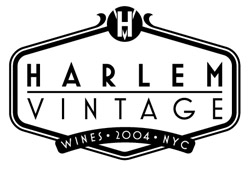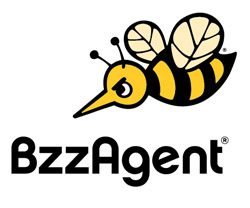
Whenever we start working with a new client, there’s always a period of learning—for both parties. As the design studio, we need to learn about the client, their business, and their audience. The client also tends to have a lot of questions for us, specifically about the design process and how we do what we do, as well as general design and branding questions. In the interests of helping to figure out the often confusing world of design, we thought that we’d pull back the curtain a bit and let you into our world.
That’s where you, our loyal Bloggery readers, friends, and compatriots come into the mix: what have you always wanted to know about branding or design in general? Some questions might be: Where should you start the branding process? How do you work with an established identity? How does a logo become a brand? Can a logo have a glow and a drop shadow? Anything in that ballpark is fair game, and we plan on making this a reoccurring series, so if you have a question, don’t be shy. Feel free to leave a comment below, and let us know what’s on your mind.
Of course, you can always e-mail us with your questions: info@alphabetarm.com.
And we’ll also field questions via Twitter here: @alphabetarm
As far as the answers to all of your non-design related questions:
A) Celery
B) We’ll never tell
C) Blue, no yellow
Branding
Q & A: Desert Island Fonts
You’ve all played that game: “If you were stuck on a desert island, what’s the one _______ that you would take?” As designers, we’ve occasionally been asked which is our favorite typeface. It’s not easy for us to pick just one, especially since one font never works for all scenarios, but in this case we limited ourselves to one font that we enjoy using more than others. Here they are, in alphabetical order:

Gill Sans
Ira
Sure, it’s a quirky face, but it’s kind of like your eccentric older uncle: he’s been around for a while, done some interesting stuff, has tons of great stories and is just a bit off. It doesn’t matter, though, because everyone likes him anyways. Gills Sans is just like that, with its humanist shapes and the occasional character that just seems, well, different. But taken as a whole, it immediately lends its own subtle traits to your copy. It’s a modern face that’s not cold or off-putting in the least. In fact, I’d say that it’s a very personable typeface indeed.

Knockout
Ryan
Inspired by the tradition of classic letterpress printing of posters, broadsides, signage and advertising, Knockout is deeply rooted in Americana. It’s blocky and extended, thin and condensed, its full of character and each of the 32 weights has its own unique voice. It’s barbecue, it’s Johnny Cash; it’s a bit peculiar and imperfect and I like it that way.

Thesis
Chris
We are family—I got all my sisters with me! We are family—Get up ev’rybody and sing! Oh… sorry. Thesis just makes me want to sing sometimes. Thesis is what you call a “Super Family.” It features a stellar serif typeface, sans-serif typeface and a mixed typeface. Overall this family has a warm, humanist feel with a corporate leaning. When working with a lot of copy it’s incredibly useful to have the broad diversity Thesis offers. What’s better than a sans and serif font that are made to work together?

Trade Gothic
Aaron
“T.G.” and I have been friends for about a dozen years now. Even if we don’t see one another for a stretch of time, he’s always welcoming and it seems we can pick up right where we left off. He comes from a great, hardworking family (I think his Dad makes suitcases or something). Of all my friends, I wouldn’t say he’s the most adventurous. He’s not really into excessive heights or extreme sports and generally plays it safe. There was one time on a field trip, he did get in trouble talking trash about Frutiger, it was kind of hilarious. T.G. just one of those dependable types that will always be there when you need them and typically handles himself with an understated grace.
Those are our favorite typefaces. What are yours?
A Few Thoughts Regarding Logo Life Span.

How long should a logo last? It’s a question most business owners, universities, corporations and entities wrestle with. The answer justifies the time, effort and cost of developing a logo that should stand the test of time. Consider that the iconic Coca-Cola logotype script was developed in 1941, the fact that Paul Rand’s restrained television network identity for ABC from 1962 still rings true, and the legendary Saul Bass designed the original Lawry’s brand mark in 1959. Of course these may be extreme instances, but its safe to say the companies “got their money’s worth”. Most agencies, art directors and designers attest: a well considered, thoughtfully executed logo should last 10 to 15 years. As a studio, we can only hope to have an identity stand as long as some of our design heroes.
As we were writing this post, we decided it might be more powerful to ask a couple clients to share their thoughts on their logo:

“Almost as soon as Fenway Recordings had a name, it had a logo. Neither decision was complicated. The logo is, and will remain timeless, looks great any size, and recently had a bit of a renaissance as we just celebrated the 10th anniversary of it’s creation. Alphabet Arm knew how to make our identity graphic and iconic, and as far as I am concerned, it will last forever, and may be the most reasonable investment that we have made.”
Mark Kates / Fenway Recordings

“We never seem to tire looking at the Harlem Vintage logo, even after the eight years of our wine store’s existence. It was important for us to have a graphic representation reminiscent of the renaissance in Harlem juxtaposed with “newness” of the wine experience we were creating in this neighborhood. Alphabet Arm exercised patience and perseverance in creating just that perfect balance to convey who we were…even as we were trying to figure it out ourselves.”
Jai Jai Greenfield / Harlem Vintage

“Ten years ago I had a meeting with the team at Alphabet Arm and proposed the name and concept behind BzzAgent, which was a task in and of itself . No one had a clue what Word-of-Mouth was at the time, and what it would become. Before I knew it, a brilliantly simple solution was proposed and we quickly had the logo that still stands and represents our social marketing company perfectly. A lot has been made of the “angry bee” which we have embraced and used as a talking point about the logo, “he’s not angry you see, he’s determined.” The logo has been the visual cornerstone of our marketing strategy. It’s been imprinted on hundreds of thousands of our BzzGuides, carved into a conference table and its likeness cast in 3D sculptures. The logo and branding remains front and center, even after our acquiring by Tesco.”
Dave Balter / BzzAgent, Inc.